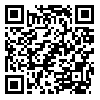BibTeX | RIS | EndNote | Medlars | ProCite | Reference Manager | RefWorks
Send citation to:
URL: http://ijeee.iust.ac.ir/article-1-773-en.html
Most studies in relay coordination have focused solely on coordination of overcurrent relays while distance relays are used as the main protection of transmission lines. Since, simultaneous coordination of these two types of relays can provide a better protection, in this paper, a new approach is proposed for simultaneous coordination of distance and directional overcurrent relays (D&DOCRs). Also, pursued by most of the previously published studies, the settings of D&DOCRs are usually determined based on a main network topology which may result in mis-coordination of relays when changes occur in the network topology. In the proposed method, in order to have a robust coordination, network topology changes are taken into account in the coordination problem. In the new formulation, coordination constraints for different network topologies are added to those of the main topology. A complex nonlinear optimization problem is derived to find the desirable relay settings. Then, the problem is solved using hybridized genetic algorithm (GA) with linear programming (LP) method (HGA). The proposed method is evaluated using the IEEE 14-bus test system. According to the results, a feasible and robust solution is obtained for D&DOCRs coordination while all constraints, which are due to different network topologies, are satisfied.

Received: 2015/03/30 | Revised: 2016/04/24 | Accepted: 2015/10/20
| Rights and permissions | |
 |
This work is licensed under a Creative Commons Attribution-NonCommercial 4.0 International License. |








